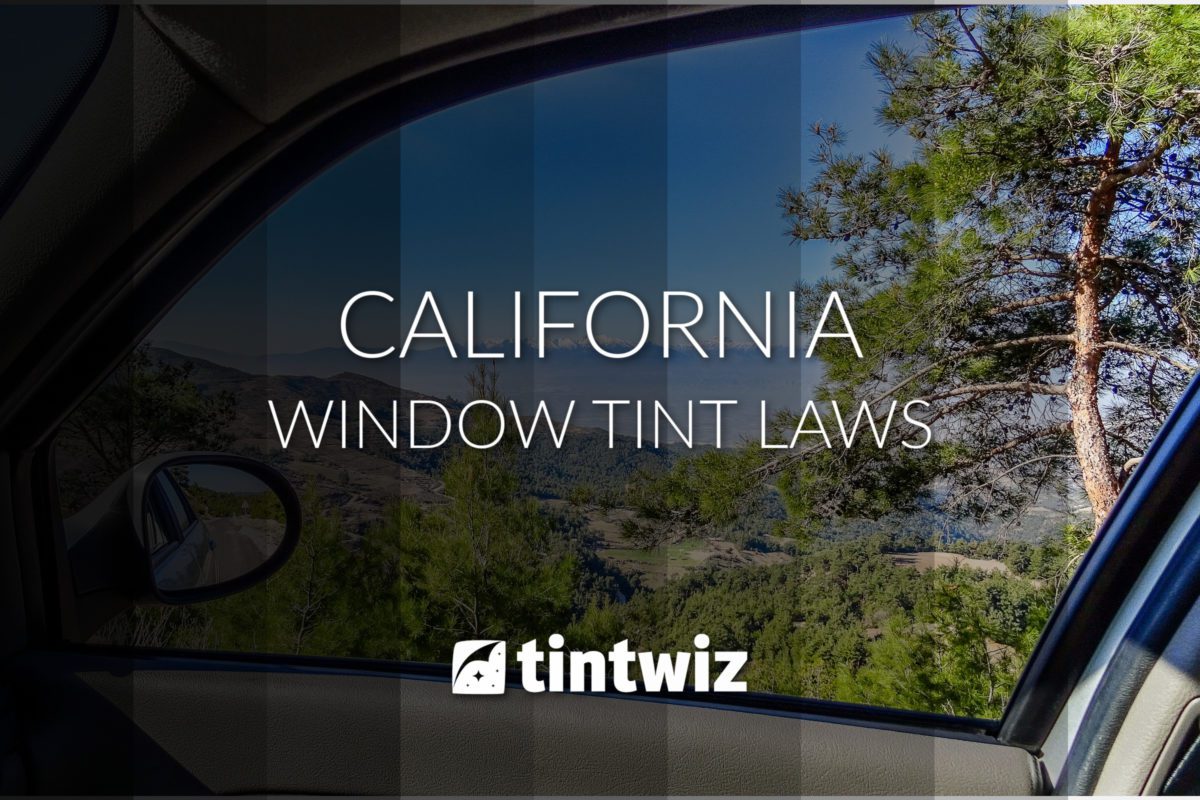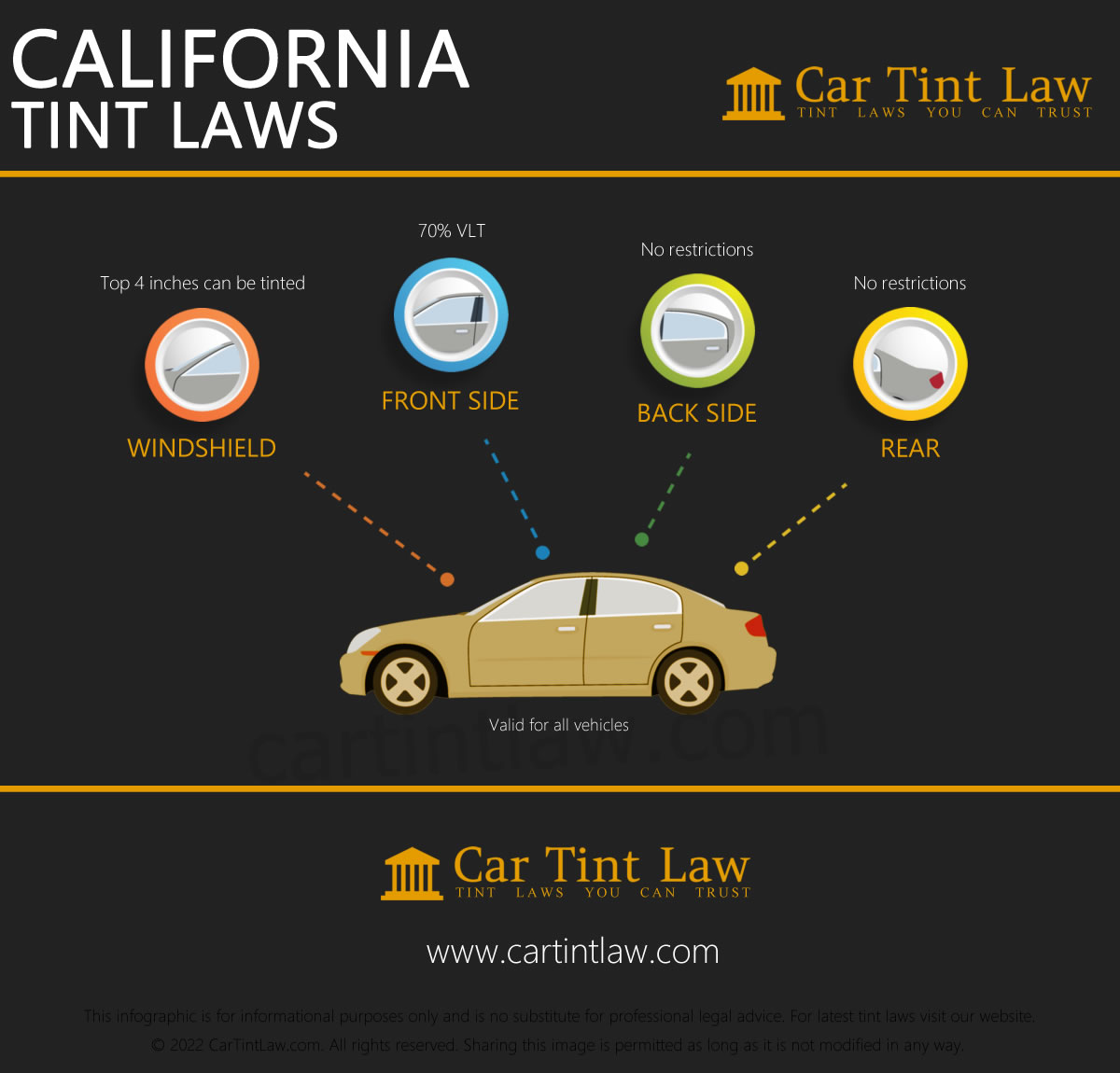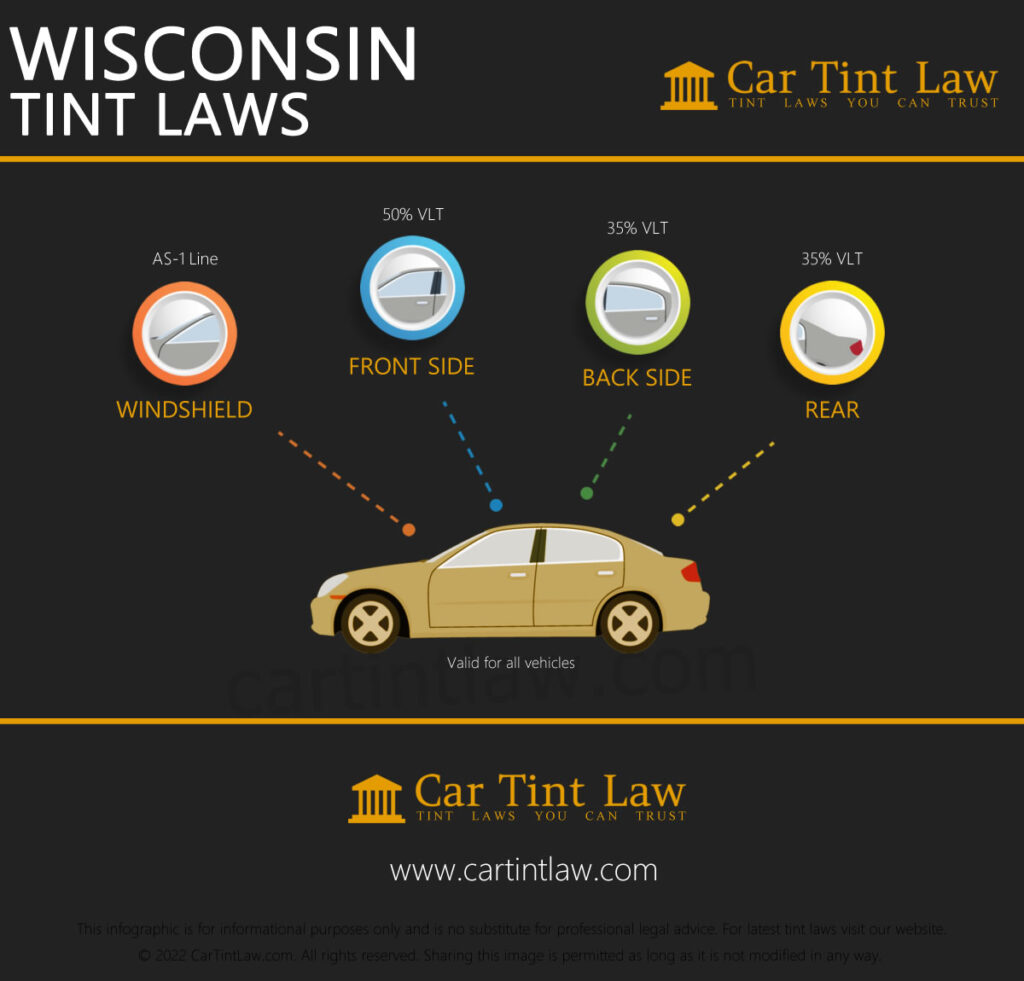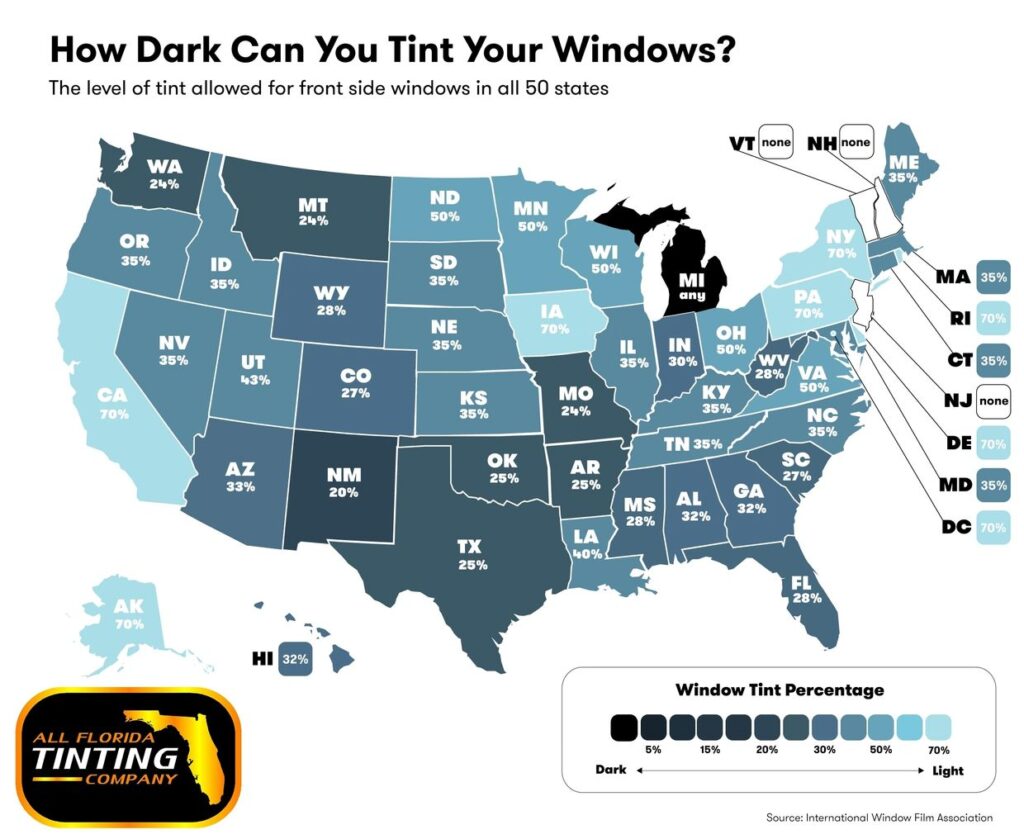As an Amazon Associate, I earn from qualifying purchases
Navigating the laws surrounding car window tinting in California can be tricky. Staying informed is crucial to avoid fines and ensure your vehicle meets legal standards.
California’s car window tint law aims to balance driver privacy and safety. Understanding these regulations helps you make informed decisions about tinting your car windows. This guide will cover the essentials of California’s window tint laws, highlighting what you need to know before heading to the tint shop.
Whether you’re considering tinting for the first time or updating your current tint, understanding these laws ensures you stay compliant and avoid unnecessary penalties. Let’s dive into the key aspects of California’s car window tint law and how it affects your vehicle.

Credit: www.acutintpro.com
Introduction To California Car Window Tint Law
Understanding California’s car window tint laws is essential for all drivers. These laws regulate the amount of tint allowed on car windows. They aim to ensure safety and visibility while driving. This introduction will give you a brief overview of these laws.
Brief History
California introduced car window tint laws in the 1990s. They aimed to reduce accidents and ensure clear visibility for drivers. Over time, these laws have evolved to match advancements in tint technology. The state updates the rules regularly to address new safety concerns.
Importance Of Window Tint Laws
Window tint laws play a crucial role in road safety. They ensure drivers have a clear view of the road. This is especially important in sunny states like California. Tinted windows can reduce glare and heat inside the car. This makes driving more comfortable and safe.
These laws also help law enforcement officers. Clear visibility into vehicles ensures officers can see inside during traffic stops. This is important for their safety and the safety of others on the road. Following these laws helps everyone stay safe and avoid fines.

Credit: tintwiz.com
Current Regulations
California law permits car window tinting with specific limits. The front side windows must allow over 70% light in. The back and rear windows can have any darkness.
The California Car Window Tint Law aims to ensure safety and visibility. It regulates how dark or reflective car window tints can be. Understanding these rules helps you stay compliant and avoid fines.
Permissible Tint Levels
Front side windows must allow more than 70% of light inside. This is to ensure clear visibility for the driver. Backside windows and rear windows can be darker. There is no minimum light transmission requirement for these windows.
Restrictions For Different Windows
Tint reflection is also regulated in California. Front-side windows and back-side windows should not be more reflective than a standard window. This helps in reducing glare and ensuring safety on the road. Front windshield tinting is restricted to the top four inches. This strip can be non-reflective and must not interfere with the driver’s view. Tinting the entire front windshield is not allowed. Following these regulations ensures you stay within the law. It also promotes road safety for all drivers. “`
Changes In 2025
California’s car window tint laws are changing in 2025. This change affects all drivers in the state. It is important to understand these updates to avoid fines. This section explains the new tint percentages and updated enforcement policies.
New Tint Percentages
Starting in 2025, new tint percentages will be enforced. These changes aim to improve road safety and visibility. Here are the new regulations:
| Window | Previous Tint Percentage | New Tint Percentage (2025) |
|---|---|---|
| Front Windshield | 70% | 75% |
| Front Side Windows | 70% | 70% |
| Rear Side Windows | Any | Any |
| Rear Window | Any | Any |
Front Windshield must allow at least 75% of light. Front side windows must still allow 70% of light. Rear windows can have any tint level.
Updated Enforcement Policies
Police enforcement will increase in 2025. Officers will check tint levels more often. They will use new tools to measure tint accurately. This ensures everyone follows the new laws.
Violating these rules will lead to fines. First-time offenders will receive a warning. Repeat offenders will face higher penalties. This strict enforcement aims to enhance road safety.
Drivers should comply with the updated laws. It is crucial to avoid penalties and ensure safety. Stay informed and make necessary adjustments to your vehicle’s tint.

Credit: www.cartintlaw.com
Exemptions And Special Cases
The California car window tint law includes various exemptions and special cases. These exemptions allow certain individuals and vehicles to have tinted windows beyond the standard limits. Understanding these special cases is crucial for compliance and safety.
Medical Exemptions
Some individuals may qualify for medical exemptions. These exemptions apply to those with specific medical conditions. Conditions like lupus or photosensitivity require less sun exposure. A licensed physician must provide documentation. This documentation verifies the medical need for darker window tints.
With proper documentation, individuals can apply for an exemption. The exemption allows for tinting beyond the standard limits. This ensures comfort and protection for those with medical conditions.
Commercial Vehicles
Commercial vehicles also have special cases under the window tint law. Vehicles used for business purposes often require higher privacy. These vehicles include delivery trucks, vans, and company cars.
For commercial vehicles, the law permits different tint levels. The front side windows must still comply with standard limits. However, rear side windows and back windows can have darker tints. This flexibility helps protect business assets and equipment.
Penalties And Fines
The California Car Window Tint Law sets strict rules. Breaking these rules can lead to penalties and fines. It’s important to know the consequences of not following the law. This section explains the penalties for first and repeat offenses.
First Offense Consequences
The first offense for illegal window tinting usually results in a fine. The fine can range from $25 to $197. The amount depends on the severity of the violation. The police may also issue a “fix-it” ticket. This means you must remove the tint and show proof of correction.
| Offense Type | Fine Range | Additional Actions |
|---|---|---|
| First Offense | $25 – $197 | Possible “fix-it” ticket |
Repeat Offense Penalties
Repeat offenses carry heavier penalties. The fines increase with each violation. A second offense can result in a fine of up to $250. The court may also impose additional penalties. These can include mandatory court appearances and increased fines.
- Second Offense: Up to $250 fine
- Third Offense: Higher fines and possible court appearances
Each repeat offense adds more to the fine. This is to encourage compliance with the law. Removing illegal tint is crucial to avoid these penalties.
Safety Considerations
Understanding the safety considerations of California’s car window tint law is crucial. Tinting affects both driver and passenger safety. Let’s delve into key aspects such as visibility issues and the impact on driving.
Visibility Issues
Visibility is a primary concern with window tinting. Dark tints can reduce the driver’s ability to see clearly. This is especially true in low-light conditions such as night driving or during heavy rain. Ensuring clear visibility is vital for safe driving.
California law regulates the darkness of window tints. The front side windows must allow more than 70% of light in. This ensures that drivers maintain a clear view of the road and surroundings. Adhering to these regulations helps prevent accidents caused by poor visibility.
Impact On Driving
Driving with heavily tinted windows can impact reaction times. Reduced visibility may delay a driver’s response to sudden obstacles or traffic signals. This increases the risk of collisions.
Moreover, law enforcement officers need to see inside vehicles during traffic stops. Dark tints can hinder this, potentially creating unsafe situations. Following the legal tint limits ensures safer interactions with police.
Lastly, consider the impact on night driving. Overly dark tints can make it difficult to see pedestrians, cyclists, or animals crossing the road. Maintaining a proper balance of tint darkness and visibility is essential.
| Window Type | Allowed Light Transmission |
|---|---|
| Front Side Windows | More than 70% |
| Rear Side Windows | Any darkness |
| Windshield | Top 4 inches only |
Abiding by these regulations helps ensure safer driving conditions. It also aligns with the law, reducing the risk of fines or penalties.
Diy Tinting Guidelines
Thinking about tinting your car windows yourself? DIY tinting can save money and give you a sense of accomplishment. Before starting, it’s essential to follow California car window tint law and guidelines.
Choosing The Right Tint
Selecting the correct tint is crucial. The law states that front-side windows must allow at least 70% of light to pass through. Rear windows have no such restriction, but they must not be mirrored or excessively dark.
| Window | Light Transmission |
|---|---|
| Front Side Windows | 70% or more |
| Rear Windows | No specific limit |
Different types of tint films are available, including dyed, metalized, and ceramic. Each has its benefits. Choose one that meets legal standards and suits your needs.
Installation Tips
Proper installation ensures durability and compliance with the law. Here are some essential tips for a successful DIY tinting project:
- Clean the windows thoroughly. Dirt and dust can cause bubbles.
- Cut the tint film slightly larger than the window. This makes it easier to trim later.
- Use a solution of soap and water to wet the window. This helps in positioning the film.
- Squeegee out bubbles and excess water. Start from the center and move outward.
- Trim the excess film carefully. Use a sharp blade for clean edges.
Following these steps ensures a smooth installation. Remember, adhering to the law avoids fines and ensures safety.
Professional Tinting Services
Professional tinting services ensure that your vehicle complies with California’s car window tint law. These services provide quality and expertise, ensuring your tint job is done right. Finding the right service provider is crucial for a flawless finish and long-lasting tint.
Selecting A Service Provider
Choosing the right service provider can be daunting. Look for providers with a solid reputation and positive reviews. Check their experience and ask for examples of their previous work. Quality matters, so ensure they use high-quality tint films that meet California’s regulations.
Ask about their warranty policy. A good provider will offer a warranty that covers bubbling, peeling, and other defects. Verify that the technicians are certified and trained in the latest tinting techniques. This ensures your car gets the best service possible.
Costs And Benefits
The cost of professional tinting varies based on several factors:
- Type of vehicle
- Quality of tint film
- Complexity of the installation
Expect to pay anywhere from $100 to $400 for a standard car. Higher-end vehicles or specialty tints can cost more. Although the initial investment may seem high, the benefits are worth it.
Professional tinting offers several advantages:
- UV Protection: Blocks harmful UV rays, protecting your skin and interior.
- Heat Reduction: Keeps your car cooler, reducing the need for air conditioning.
- Privacy and Security: Tinted windows provide privacy and deter theft.
- Improved Appearance: Gives your car a sleek and polished look.
Investing in professional tinting services ensures you comply with the law and enjoy these benefits.
Frequently Asked Questions
What Is The Legal Tint Limit In California?
In California, the front side windows must allow over 70% of light. The rear and back side windows can have any darkness.
Can You Get Pulled Over For Window Tint In California?
Yes, you can be pulled over if your window tint exceeds legal limits. It’s important to follow the law.
Are Medical Exemptions Allowed For Window Tint In California?
Yes, medical exemptions are allowed in California. You must carry a doctor’s note, and it should state the necessity.
What Are The Penalties For Illegal Window Tint In California?
Penalties can include a fix-it ticket or fines. Repeated offenses may lead to higher fines and stricter penalties.
Conclusion
Understanding California’s car window tint law is crucial for all drivers. It ensures safety and compliance. Remember to check the latest regulations regularly. Following these rules helps avoid fines and legal issues. Stay informed, stay safe, and enjoy a clear view on the road.
As an Amazon Associate, I earn from qualifying purchases


